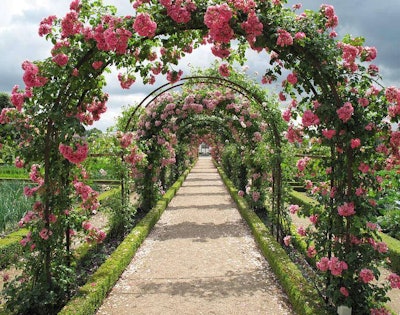
Many may not realize that June is National Rose Month, so with this in mind, we’ve decided to take a look at growing, caring for and maintaining these beauties.
Roses are a classic flower in most gardens, and they come in a variety of shapes, colors and types. According to the National Garden Bureau, there are more than 150 species of roses, but only a few are actually used today in gardens. Since the hybridization of the modern rose first started in Western Europe in the 18th century, the National Garden Bureau says that more than 11,000 varieties of hybrid roses now exist with more being bred each year.
Growing
Roses require full sun, because without six to eight hours of full sun there will be fewer flowers and weaker, longer stems with a higher likelihood of disease.
Roses also need deep watering during dry spells, and using drip irrigation is ideal when trying to avoid diseases caused by wet foliage. Disease pressure can vary depending on what region you are in, but humidity is one of the worst causes.
Overall, modern rose varieties today are more resistant, which can make the growing experience much easier than it has been in the past.
Maintaining
Be sure to stress to customers who want roses in their landscape that pruning is an absolute must when it comes to rose care.
“Every plant needs a little bit of maintenance,” says Jacques Ferare, rose program manager with Star Roses and Plants. “There’s no such thing as a maintenance-free plant. Even perennials and shrubs may need to be sheared back in the spring to look their best.”
Having a variety of rose types in the world means that there are also multiple different pruning techniques for each type, so do your research before discussing rose options with your customers.
There are various pruning techniques you and your employees can use to get the best results, including:
- Thinning – Removes certain branches back to the main trunk or stem to reduce the density of the plant without reducing the height.
- Reducing– Reduces the height of the plant by removing larger branches down to smaller, lateral branches.
- Heading– Trims the growing tips of shoots to force new buds to grow and thicken the growth at the cuts.
Be sure to prune roses before winter; use hedge shears to lightly prune plants to maintain their size. Trim them lightly after a flush of blooms as well, as the flowers will fade. This post-bloom pruning can increase the number of flowers, which will bring plants covered in blossoms.










